Die Vielseitigkeit von Laborporzellan: Entdecken Sie Keramiktiegel f├╝r Laborger├żte
Zur Durchf├╝hrung wissenschaftlicher Experimente und Analysen sind Labore auf verschiedene Ger├żte und Werkzeuge angewiesen. Unter diesen sticht Laborporzellan als vielseitiges und unverzichtbares Material hervor. In diesem Artikel erkunden wir die Welt des Laborporzellans und konzentrieren uns dabei insbesondere auf Laborkeramiktiegel. Von ihrer Bedeutung bis hin zu ihren verschiedenen Typen, Anwendungen und Pflege werden wir in die vielseitige Welt der Laborkeramiktiegel eintauchen.
| Inhaltsverzeichnis |
|
| 1. Einleitung |
6. Zu ber├╝cksichtigende Faktoren bei der Auswahl von Laborkeramiktiegeln - Gr├Č├¤e und Kapazit├żt - Material Zusammensetzung - Oberfl├żchenfinish - Kosten und Verf├╝gbarkeit |
| 2. Was ist Laborporzellan? |
7. Pflege und Wartung von Laborporzellantiegeln - Reinigung und StErilisierung - Handhabung und Lagerung - Vermeidung von Thermoschocks |
| 3. Bedeutung von Laborkeramiktiegeln - Haltbarkeit und Hitzebest├żndigkeit - Chemische Resistenz - Vielseitigkeit und Kompatibilit├żt - Pr├żzision und Genauigkeit |
8. Fazit |
| 4. Arten von Laborporzellantiegeln - Tiegel mit hoher Form - Tiegel mit niedriger Form - Gooch-Tiegel - Verdampfungstiegel - Auflauftiegel |
9. FAQs - K├Čnnen Labortiegel aus Porzellan mit korrosiven Stoffen verwendet werden? - Wie lange halten Labortiegel aus Keramik normalerweise? - Halten Labortiegel aus Porzellan hohen Temperaturen stand? - Gibt es eine Sicherheit?Welche Vorsichtsma├¤nahmen sind bei der Verwendung von Laborkeramiktiegeln zu beachten? - K├Čnnen Labware-Keramiktiegel in Mikrowellen├Čfen verwendet werden? |
| 5. H├żufige Anwendungen von Labware-Keramiktiegeln - Erhitzen und Schmelzen - F├żllung und Filtration - Mischen und R├╝hren - Analytische Chemie |
|
Einf├╝hrung
Laboratory porcelain, also known as labware ceramic, is a type of material widely used in scientific laboratories. It is made from a combination of clay, feldspar, and quartz, which are shaped, molded, and fired at high temperatures to create robust and heat-resistant labware. Labware ceramic crucibles, in particular, play a crucial role in a wide range of laboratory applications.
What is Laboratory Porcelain?
Laboratory porcelain is a type of ceramic material specifically designed for use in scientific laboratories. It possesses exceptional heat resistance, chemical resistance, and mechanical strength, making it suitable for various scientific processes. The composition and manufacturing process of laboratory porcelain ensure its durability and reliability under extreme conditions.
Importance of Labware Ceramic Crucibles
Labware ceramic crucibles hold immense significance in laboratory settings due to their unique properties and capabilities. Let's explore some key reasons why labware ceramic crucibles are widely used:
Durability and Heat Resistance
Labware ceramic crucibles are renowned for their remarkable durability and heat resistance. They can withstand high temperatures without compromising their structural integrity. This quality makes them ideal for processes involving intense heat, such as heating, melting, and calcination.
Chemical Resistance
In scientific experiments, researchers often work with corrosive or reactive substances. Labware ceramic crucibles offer excellent chemical resistance, enabling them to handle a wide range of chemicals without deteriorating or contaminating the samples.
Versatility and Compatibility
Labware ceramic crucibles are compatible with a diverse array of laboratory processes and substances. They can be used for heating, cooling, evaporation, and precipitation. Additionally, labware ceramic crucibles can be employed in various laboratory techniques, including filtration, mixing, and stirring.
Precision and Accuracy
Labware ceramic crucibles are designed to ensure precise and accurate measurements. Their uniform composition and structure provide consistency, making them reliable tools for scientific measurements and analyses. Researchers can rely on labware ceramic crucibles to obtain accurate results and maintain experimental integrity.
Types of Laboratory Porcelain Crucibles
Labware ceramic crucibles come in various types, each suited for specific applications. Some common types include:
1. High Form Crucibles
These high form crucibles have taller and narrower shapes, providing a larger surface area for evaporation and heating. They are commonly used in applications that require controlled heating and strong resistance to thermal shock.
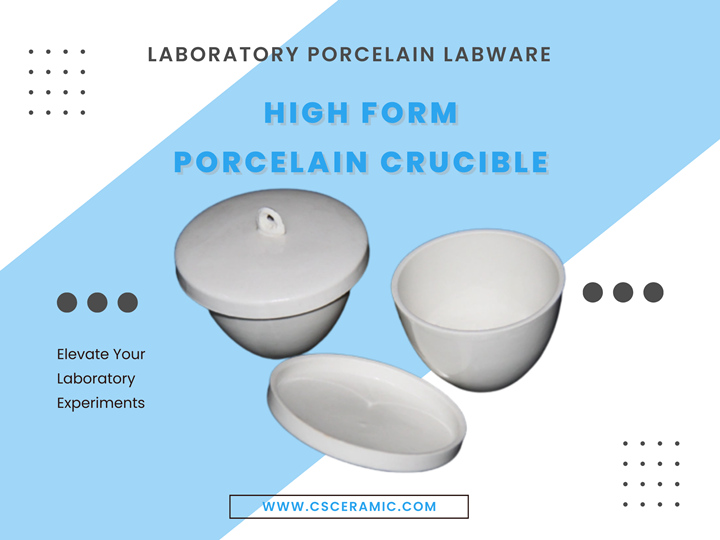
2. Low Form Crucibles
Low form crucibles have a wider and shallower design, offering easier access to the contents and facilitating stirring and mixing. They are often used in general heating and melting processes.
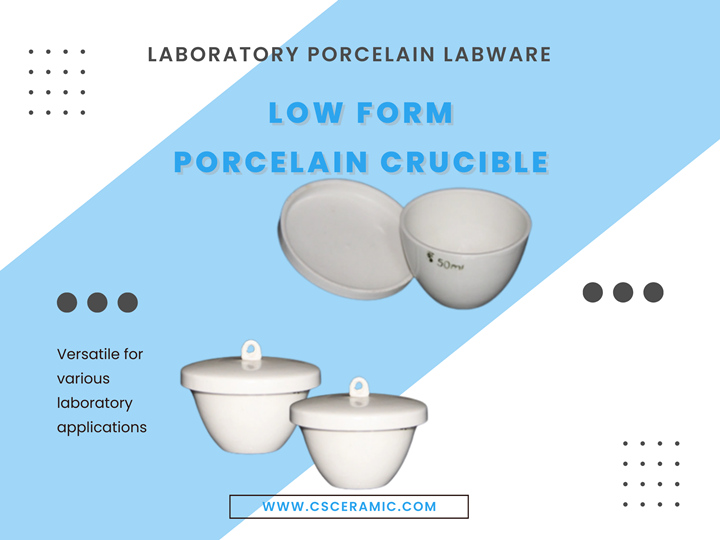
3. Gooch Crucibles
Gooch crucibles feature a perforated bottom, allowing for the filtration of solid materials from liquids. They are commonly used in analytical chemistry and gravimetric analysis.
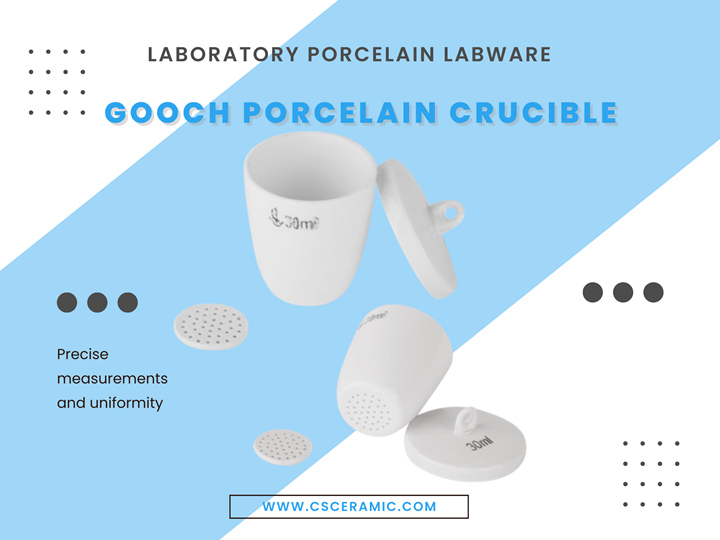
4. Evaporating Crucibles
Evaporating crucibles have a flat-bottomed shape, making them suitable for evaporation processes. They are often used in the concentration of solutions and the preparation of solid samples.
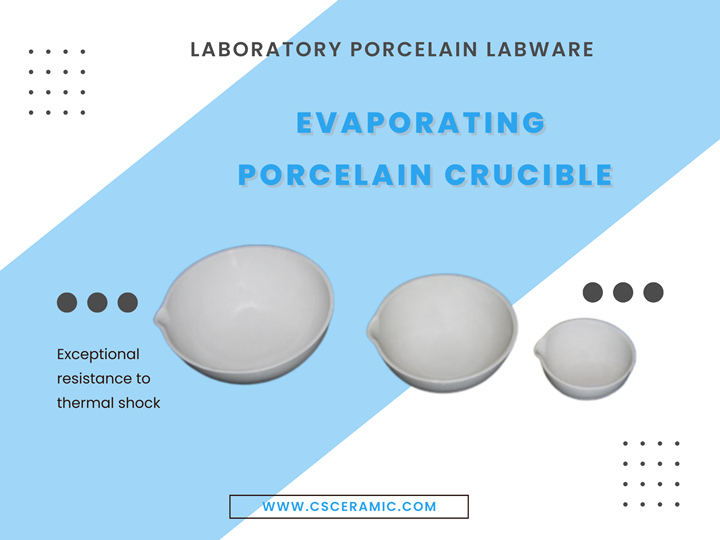
5. Casseroles Crucibles
Casseroles crucibles have a larger capacity and are primarily used for batch processes, such as bulk mixing, heating, and melting.
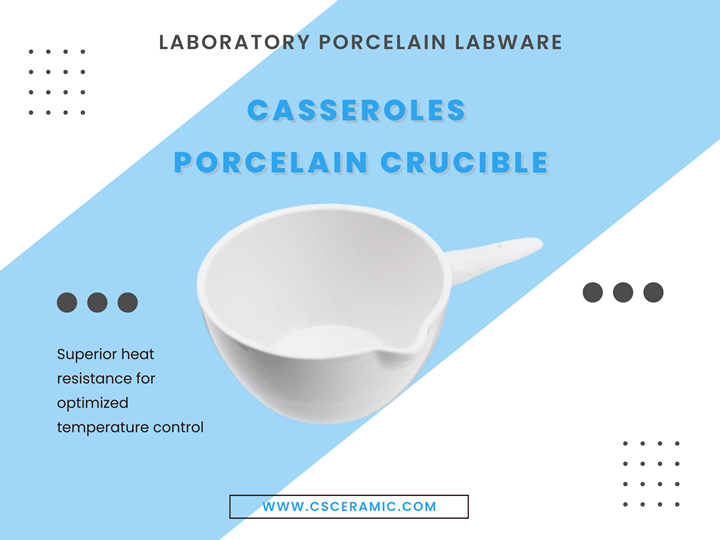
Common Applications of Labware Ceramic Crucibles
Labware ceramic crucibles find applications in various scientific processes and experiments. Some common applications include:
1. Heating and Melting
Labware ceramic crucibles are frequently used for heating and melting substances. They can withstand high temperatures and provide a controlled environment for precise heat application.
2. Precipitation and Filtration
Labware ceramic crucibles are ideal for precipitation processes, where solids are formed from solutions. Additionally, with the use of Gooch crucibles, they enable efficient filtration of solids from liquids.
3. Mixing and Stirring
Labware ceramic crucibles allow for effective mixing and stirring of substances due to their wide range of shapes and sizes. They provide a stable environment for thorough blending and homogenization.
4. Analytical Chemistry
Labware ceramic crucibles play a vital role in analytical chemistry. They are utilized in various techniques, including sample preparation, gravimetric analysis, and determination of chemical compositions.
Factors to Consider when Choosing Labware Ceramic Crucibles
When selecting labware ceramic crucibles for specific laboratory applications, several factors should be taken into consideration:
1. Size and Capacity
The size and capacity of the crucible should be chosen based on the amount of material or solution to be processed. It is essential to select a crucible that can comfortably accommodate the required volume while leaving enough headspace for effective mixing and reactions.
2. Material Composition
Labware ceramic crucibles can vary in their composition, with different proportions of clay, feldspar, and quartz. The material composition affects the crucible's resistance to heat, chemicals, and mechanical stress. Researchers should choose a composition that aligns with the intended applications.
3. Surface Finish
The surface finish of a labware ceramic crucible impacts its ease of cleaning and resistance to contamination. A smooth and non-porous surface is desirable to prevent the accumulation of substances and ensure accurate results.
4. Cost and Availability
Consideration should be given to the cost and availability of labware ceramic crucibles. Researchers should assess their budget constraints and ensure a reliable supply of crucibles for ongoing experiments.
Care and Maintenance of Laboratory Porcelain Crucibles
Proper care and maintenance are crucial for extending the lifespan of labware ceramic crucibles and ensuring their optimal performance:
1. Cleaning and Sterilization
After each use, labware ceramic crucibles should be thoroughly cleaned to remove any residual substances. They can be cleaned using suitable detergents, brushes, and rinsed with distilled water. If required, sterilization methods like autoclaving or high-temperature baking can be employed.
2. Handling and Storage
Labware ceramic crucibles should be handled with care to avoid accidental breakage. It is recommended to store them in a designated area, preferably lined with soft material to prevent chipping or scratching.
3. Avoiding Thermal Shock
Labware ceramic crucibles should be gradually heated or cooled to avoid thermal shock. Sudden temperature changes can cause cracking or breakage. Preheating the crucibles or using heat-resistant mats during heating and cooling processes can help mitigate this risk.
Conclusion
Labware ceramic crucibles offer unmatched versatility and reliability in scientific laboratories. With their durability, heat resistance, and chemical compatibility, they are indispensable tools for various applications such as heating, melting, precipitation, and analytical chemistry. By considering factors like size, composition, and surface finish, researchers can select the most suitable crucibles for their specific needs. Proper care, cleaning, and storage ensure the longevity and optimal performance of labware ceramic crucibles, making them invaluable assets in laboratory settings.
FAQs
1. Can laboratory porcelain crucibles be used with corrosive substances?
- Yes, laboratory porcelain crucibles exhibit excellent chemical resistance and can safely handle corrosive substances without degradation.
2. How long do labware ceramic crucibles typically last?
- The lifespan of labware ceramic crucibles depends on their usage and care. With proper handling and maintenance, they can last for many years.
3. Can laboratory porcelain crucibles withstand high temperatures?
- Absolutely. Laboratory porcelain crucibles are designed to withstand high temperatures without compromising their structural integrity.
4. Are there any safety precautions to keep in mind while using labware ceramic crucibles?
- It is important to handle labware ceramic crucibles with care to avoid breakage. Additionally, proper personal protective equipment should be worn while working with hazardous substances.
5. Can labware ceramic crucibles be used in microwave ovens?
- Keramiktiegel von Labware sind nicht f├╝r die Verwendung in Mikrowellenherden geeignet, da sie thermische Belastungen und m├Čgliche Sch├żden an den Tiegeln verursachen k├Čnnen.
Vielen Dank f├╝rs Lesen. Wir laden Sie ein, CSCERAMIC f├╝r weitere Informationen zu besuchen , wenn Sie mehr ├╝ber industrielle Keramikmaterialien und das fortschrittliche Sortiment an Keramikprodukten, die wir anbieten, erfahren m├Čchten.




 info@csceramic.com
info@csceramic.com







 +86 18273288522
+86 18273288522